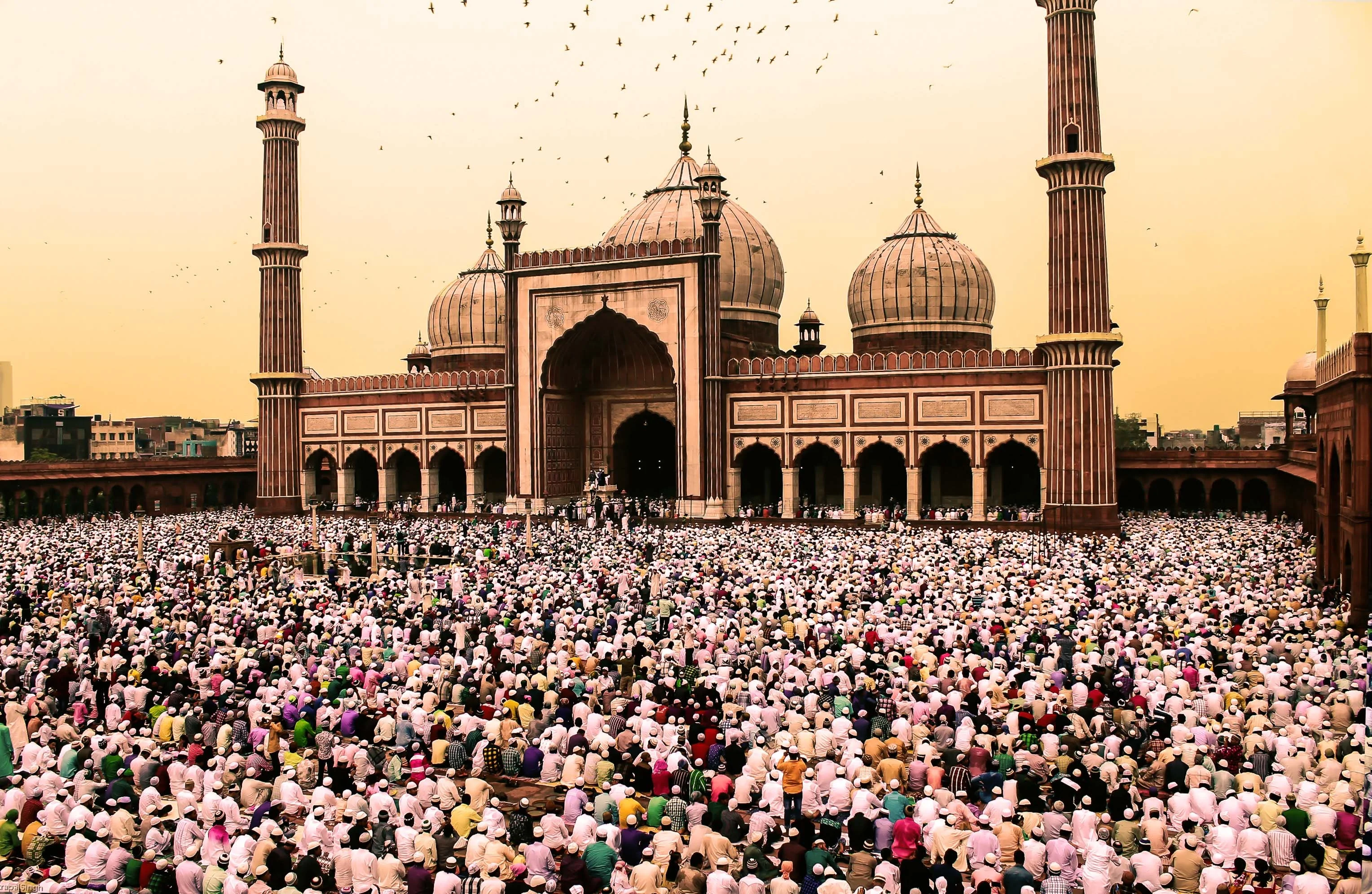Sample by My Essay Writer 
The Rise and Development of Islam
The Islamic religion is believed to have started in the 7th Century AD in the present day Saudi Arabia. The religion was founded by Prophet Muhammad who lived between 570 and 632 AD (Morgan & Read, 2010). The rise and development of Islam relate to the political, economic, social, and cultural transformations that occurred across the Islamic civilization. The Islamic state grew rapidly following the death of Muhammad. Much of the success in the spread of Islam was achieved through voluntary conversion of unbelievers and military conquests of opponents. Before his death, Muhammad had established the new faith by converting and conquering those who opposed him. After his death in 632, the first Caliph, Abu Bakr, carried on with the mission to abolish paganism across the Arabian lands. Also, the Caliph sought to incorporate the Arab tribes into a political region administered from Medina. The merchant elite of Arabia successfully consolidated power across the Arabian Peninsula through unity in God and a commitment to political consolidation (Morgan & Read, 2010).

The religion experienced rapid growth during the reigns of the first four caliphs. Much of this success was got through the devotion of the adherents to the concept of jihad. Muslims are committed to spreading their faith to all unbelievers and defending the religion from attack (Morgan & Read, 2010). While the original idea of the jihad did not allow aggression against non-Muslims, the war was occasionally launched by Muslims who had a different interpretation of the Quran (Morgan & Read, 2010). As a result, jihad was associated with some of the early conquests across Arabia. The belief system in Islam arose from the ideas of Muhammad. Central to these beliefs were the Five Pillars of Faith. These pillars were intended to be the cornerstone of a Muslim’s life. The Declaration of Faith was an indication of complete surrender to Allah and designed to encourage a high degree of self-respect, determination, and perseverance. The daily prayers are important in establishing a strong spiritual connection between an individual and his Creator (Morgan & Read, 2010). [“Write my essay for me?” Get help here.]
Fasting during the Holy month of Ramadan is prescribed in the Quran as a means of attaining piety. Similar to worship, fasting requires submission and obedience to Allah’s commands. The fasting promotes self-purification and spiritual growth of an individual and provides an opportunity to sympathize with the poor through charity (Morgan & Read, 2010). Similarly, fasting helps an individual to appreciate the value of self-restraint and patience. The soul of a person is purified through fasting which also contributes to creating awareness about issues that affect people in the world such as hardships. The prescribed charity arises out of the belief that all wealth belongs to Allah. As a result, it is an obligation of every Muslim who attains certain criteria to give a small portion of their wealth (Zakah) to the poor and needy. The pilgrimage to Makkah offers a temporary suspension of all activities of the world to worship, reflect, and seek forgiveness from Allah (Morgan & Read, 2010).

The Sunni and Shiite Split
The initial split between Sunnis and Shiites happened soon after the death of Prophet Muhammad in 632 (Gibson, 2012). The majority of his followers wanted the whole Muslim community to determine who would be his successor. The Sunnis wanted the caliphate to be the best candidate who had the political means to take charge of the Muslim empire. They, therefore, backed Muhammad’s father in law, Abu Bakr (Gibson, 2012). Consequently, the Sunnis prevailed, and Abu Bakr was named the first caliph. On the other hand, a smaller group of Muslims felt that Muhammad’s successor should come from his family. They fronted Ali, Muhammad’s son in law. This group became to be known as the Shiat Ali (followers of Ali) or Shiites (Gibson, 2012). They believed Ali was the only person with the spiritual authority to succeed Muhammad. Ali was eventually named the fourth caliph leading to a series of violence where two caliphs and Ali were killed. The war continued, and Ali’s son known as Hussein took charge of the Shiites. He rejected the rule of the caliph during that time and fought against a large army of the opposite side. Hussein, his family, and followers, were all killed in the ensuing massacre (Gibson, 2012). [Need an essay writing service? Find help here.]
Hussein’s death acted as a symbol which provides much spiritual power to his followers, the Shiites. The difference between the Sunnis and the Shiites is a representation of how power works in the real world vis-à-vis how it should work in the ideal world. Muhammad had hoped for the unity of the Muslim nation and aspired to see a world where all non-believers would be conquered and converted into Islam (Morgan & Read, 2010). The absolute breaking point for the two factions came with the death of Hussein some 48 years after the death of Muhammad. The Shiites rejected what they deemed as the corrupt Sunni leadership. The Shiites view the death of Hussein as a kind of martyrdom or self-sacrifice. They consider it as an indication to wake the conscience of the Muslims while calling for an end to tyranny and corruption in the religion. The Shiites called their leaders Imam, and Hussein was the third Imam (Morgan & Read, 2010). The significance of imams is one of the core differences between Sunnis and Shiites today.

Some of the Sunnis believe that the Shiites attribute divine qualities to their Imams and they consider this a great sin. The story of the 12th imam, Hidden Imam, creates much difference between the Sunnis and the Shiites (Gibson, 2012). In the 10th century, the 12th Shiite Imam was reported to have gone into occultation and the Shiites believe God took him into hiding to return during the end of the world. They consider him the Mahdi or Messiah much like in the Christian sense (Gibson, 2012). The Sunni Muslims are today the largest denomination of Islam accounting for between 75% and 80% of the world’s Muslims. They believe that hereditary spiritual class had no place in Islam and leadership had to be earned and not obtained through birthright (Gibson, 2012).
Differences between the Umayyad and Abbasid Dynasties
The Umayyad dynasty was the second caliphate to emerge after the death of Prophet Muhammad. The Umayyad caliphate hailed from Mecca and was among the four dynasties that ruled the Islamic lands (Morgan & Read, 2010). The Umayyad family had initially ascended to power through Caliph Uthman Affan. However, the Umayyad regime was founded much earlier during the First Muslim Civil War by Muawiya ibn Affan (Morgan & Read, 2010). On the other hand, The Abbasid Caliphate was one of the four caliphates formed after the death of Prophet Muhammad. The Abbasid dynasty descended from Muhammad’s uncle, Abbas ibn Abd al-Muttalib (Morgan & Read, 2010). The dynasty ruled as caliphs during much of their time in Baghdad after assuming the authority of the Muslim Empire from the Umayyad dynasty. Politically, while the Umayyad won their victories through military means, they would not force the people they conquered to convert to Islam. On the other hand, the Abbasids instituted an absolute bureaucracy with full authority under Sharia Law. The absolute power was seen through a Royal Executioner always present on the side of each caliph (Morgan & Read, 2010).

The Umayyad did not aggressively seek to convert the Dhimmis (people of the book) since such people would pay a higher tax, making their non-Muslim status profitable to the Umayyad (Gibson, 2012). The Abbasids encouraged the conversion of the Dhimmis to deter them from paying higher taxes as non-Muslims. The new converts were known as Mawalis and were always treated in almost the same manner as the rest of the Muslims (Gibson, 2012). Under the Umayyad, trade was strictly controlled by the Muslims under Sharia law, and it flourished. The central location of the Umayyad in Damascus helped to link the various lands which boosted trade. The trade also flourished during the Abbasid dynasty leading to the growth of a middle class made up of Muslim merchants. Urbanization increased during the Abbasid dynasty following the growth of the handicraft industry. The nobles controlled the farmlands and the peasants became tenants. As a result, slavery increased during the Abbasid dynasty causing many challenges when the slaves eventually converted to Islam (Gibson, 2012). [Click Essay Writer to order your essay]
Among the Umayyad, women had a higher status and enjoyed many privileges than during the Abbasids. The higher status was derived from the instructions of Muhammad in his teachings to the Bedouin Arabs (Gibson, 2012). Similarly, non-believers (Dhimmis), under the Umayyad, were not actively persecuted like during the Abbasids. In both dynasties, the non-believers lost profitable jobs and paid higher taxes to the masters. The decline of the Umayyad dynasty was mainly due to the lavish lifestyles lived by the members (Gibson, 2012). Such lifestyle was deemed to be outside the teachings of Quran. As a result, many revolts began with the final rebellion leading to the murder of most of the clan members. The Abbasid caliphate came from within and outside the clan. Within the dynasty, the Persian Bureaucrats became very influential and eventually declared their independence in 934 CE as the Buyid Dynasty. The Fatimids also broke away from the Abbasid dynasty in 909 CE. Later, a clan of slaves who had served the regime also declared their independence, leading to the gradual weakening of the clan. The Mongols achieved the final destruction of the Abbasid in 1258 CE (Gibson, 2012).
References
Gibson, D. (2012). A history of the nation of Islam: Race, Islam, and the quest for freedom. Santa Barbara, CA: Praeger.
Morgan, D., & Read, A. (Eds.). (2010). The new Cambridge history of Islam: The eastern Islamic world, eleventh to eighteenth centuries (Vol. 3). Cambridge, England: Cambridge University Press.







